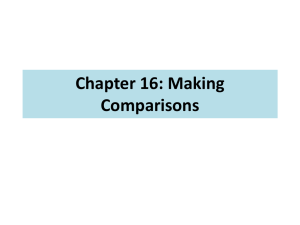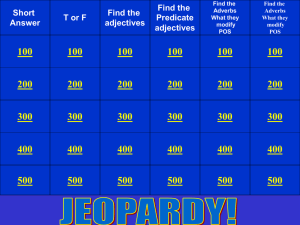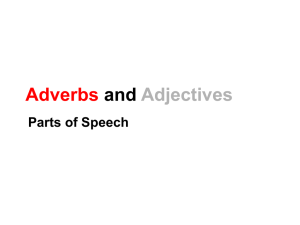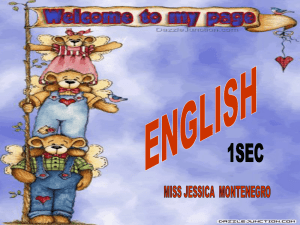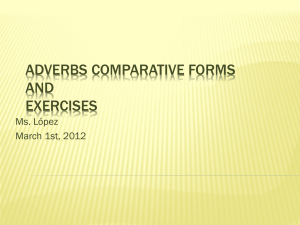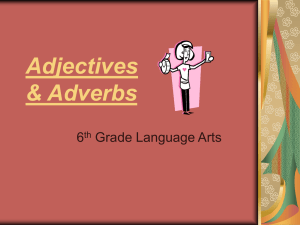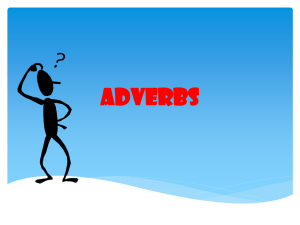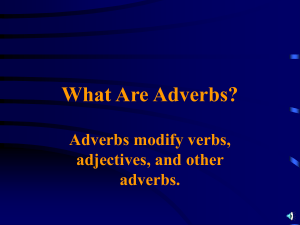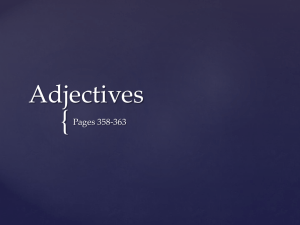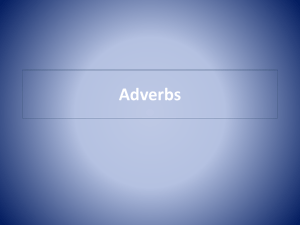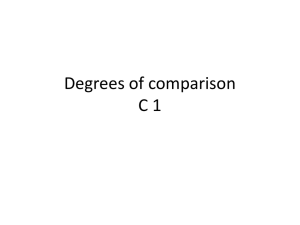Adjectives and Adverbs
advertisement
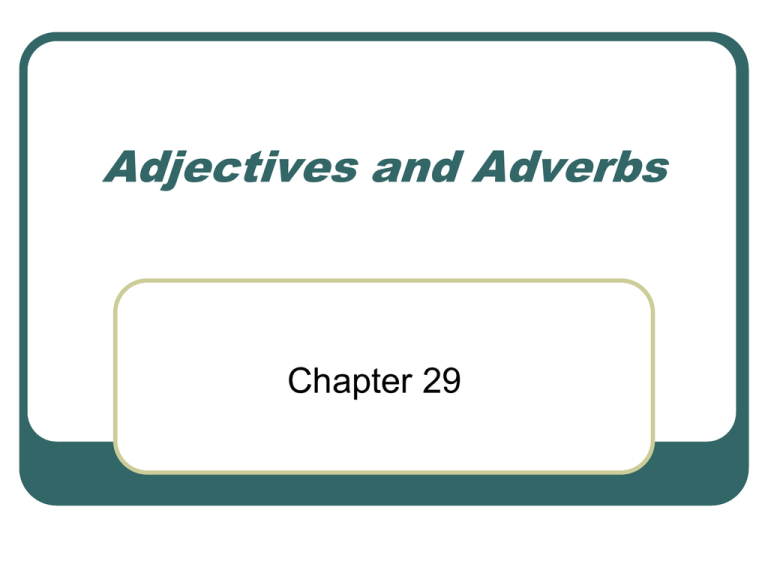
Adjectives and Adverbs Chapter 29 Part A Defining and Using Adjectives and Adverbs Adjectives and adverbs are two kinds of descriptive words. Adjectives describe or modify nouns or pronouns. Adjectives explain what kind, which one, or how many. Colors and numbers are adjectives. Adjectives Which words are adjectives? The Spanish city of Madrid has exciting nightlife. →Spanish exciting Adverbs Adverbs describe or modify verbs, adjectives, and other adverbs. Adverbs tell how, why, when, where, and to what extent. Many adverbs end in -LY Adverbs Which words are adverbs? The really large Doberman barked angrily all night. →really angrily all night Telling Adjectives and Adverbs Apart Many adverbs are formed when the ending -LY is added to an adjective: Adjective Adverb bad badly slow slowly nice nicely quick quickly quiet quietly real really Telling Adjectives and Adverbs Apart Some adjectives – for example, lovely, friendly, and lively -- end in –LY. Be careful not to use these words as adverbs. Remember: Adjectives describe nouns and pronouns. Adverbs describe verbs, adjectives, and other adverbs. The Trouble Maker One adjective/adverb pair is particularly troublesome: Adjective Adverb good well He is a good dancer. (Good describes the noun dancer.) He dances well. (Well describes the verb dances-how does he dance? He dances well.) Comparative and Superlative The comparative of an adjective or adverb compares two people or objects. The superlative of an adjective or adverb compares three or more people or objects, or one to a group. Forming comparative and superlative Add –ER to make an adjective or adverb comparative: Ben is taller than Julie. (MORE tall) Add –EST to make an adjective or adverb superlative. Ben is the tallest in the class. (MOST tall) Forming comparative and superlative Adjectives and adverbs of more than one syllable usually form the comparative by using MORE: Donna is more beautiful than Tami. (Beautifuler or more beautifuler is incorrect.) Adjectives and adverbs of more than one syllable usually form the superlative by using MOST: Donna is the most beautiful girl on stage. (The same rule applies here. Do not put most and –est words together. Most beautifulest or beautifulest girl is incorrect grammar.) Forming comparative and superlative Note, however, that adjectives that end in –Y, such as lazy, happy, and sunny change the Y to I and add –ER or –EST: Dane is lazier than Lane. Gabriel is the laziest of all. The Trouble Makers Adjective good Comparative better Superlative best bad worse worst Adverb well Comparative better Superlative best badly worse worst Pay attention when using the above words. Good is used as an adjective and well is used as an adverb. Their comparative and superlative forms do not look anything like their original form. Review Chapter 29 for more on Adjectives and Adverbs.
